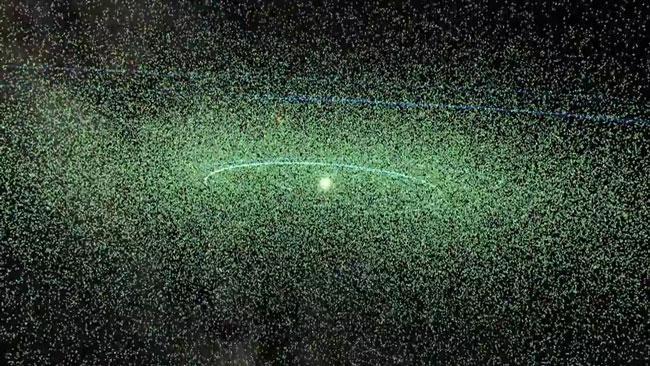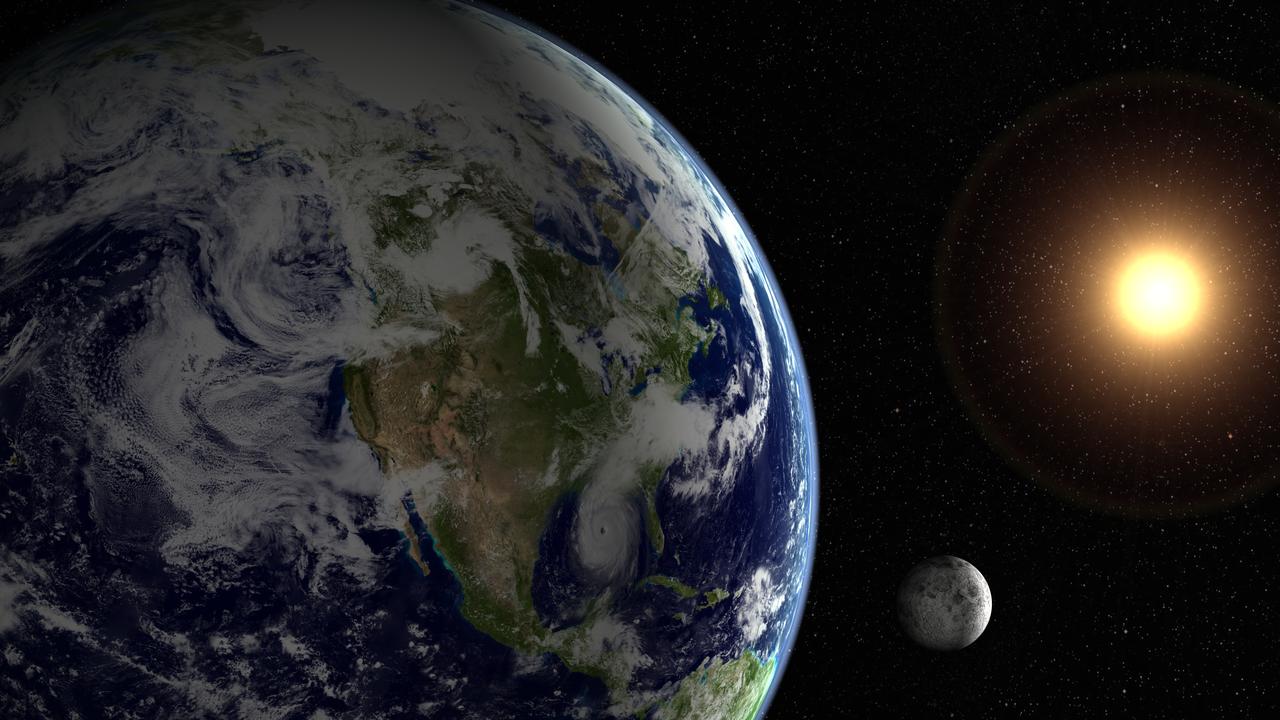Astronomers say Russian Chelyabinsk fireball proves threat from asteroids is worse than first thought
THE explosive power packed into the meteor that erupted over Russia earlier this year proves the asteroid threat is worse than first thought, astronomers say.

SCIENTISTS studying the terrifying meteor that exploded without warning over a Russian city earlier this year say the threat of space rocks smashing into Earth is more severe than they thought.
Meteors about the size of the one that streaked through the sky at 67,600k,/h and burst over Chelyabinsk in February - and ones even larger and more dangerous - are probably four to five times more likely to hit the planet than scientists believed before the fireball, according to three studies published this week in the journals Nature and Science.
Until Chelyabinsk, NASA had looked only for space rocks about 30 meters wide and bigger, figuring there was little danger below that.
This meteor was only 19 meters across but burst with the force of about 40 Hiroshima-type atom bombs, scientists say. It released a shock wave that shattered thousands of windows and injured more than 1600 people, and its flash was bright enough to temporarily blind 70 people and cause dozens of skin-peeling sunburns just after dawn in icy Russia.
More common than thought
Up until then, scientists had figured a meteor causing an airburst like the one in Russia was a once-in-150-years event, based on how many space rocks have been identified in orbit. But one of the studies now says it is likely to happen once every 30 years or so, based on how often these things are actually hitting.
RELATED: UN votes to establish asteroid defence plan
Scientists said a 1908 giant blast over Siberia, a 1963 airborne explosion off the coast of South Africa, and others were of the type that is supposed to happen less than once a century, or in the case of Siberia, once every 8000 years, yet they all occurred in a 105-year time span.
Because more than two-thirds of Earth is covered with water and other vast expanses are uninhabited deserts and ice, other past fireballs could have gone unnoticed.
Chelyabinsk lessons
The studies said the Chelyabinsk meteor probably split off from a much bigger space rock.
What happened in Russia is altering how astronomers look at a space rocks. With first-of-its-kind video, photos, satellite imagery and the broken-up rock, scientists have been able to piece together the best picture yet of what happens when an asteroid careens into Earth's atmosphere. It's not pretty.
``I certainly never expected to see something of this scale or this magnitude,'' said University of Western Ontario physicist Peter Brown, lead author of one study. ``It's certainly scary.''
Scientists said the unusually shallow entry of the space rock spread out its powerful explosion, limiting its worst damage but making a wider area feel the effects. When it burst it released 500 kilotons of energy, scientists calculated.
``We were lucky. This could have easily gone the other way. It was really dangerous,'' said NASA meteor astronomer Peter Jenniskens, co-author of one of the papers. ``This was clearly extraordinary. Just stunning.''
Disaster assessment
Lindley Johnson, manager of NASA's Near Earth Object program, told The Associated Press that the space agency is reassessing what size space rocks to look for and how often they are likely to hit.
By readjusting for how often these rocks strike and how even small ones can be a threat, ``those two things together can increase the risk by an order of magnitude,'' said Mark Boslough, a Sandia National Lab physicist, co-author of one of the studies.
In fact, the US government got a new sense of urgency after Chelyabinsk, quietly holding a disaster drill earlier this year in Washington that was meant to simulate what would happen if a slightly bigger space rock threatened the East Coast.
In the early part of the drill, when it looked as if the meteor would hit just outside the nation's capital, experts predicted 78,000 people could die. But when the mock meteor ended up in the ocean, the fake damage featured a 15-meter tsunami and shortages of supplies along the East Coast, according to an after-action report.
The little ones pack a punch
The exercise and the studies show there's a risk from smaller space rocks that strike before they are detected - not just from the long-seen-in-advance, dinosaur-killing giant ones like in the movie ``Armageddon,'' said Bill Ailor, a space debris expert at the Aerospace Corporation who helped coordinate the drill.
``The biggest hazard from asteroids right now is the city-busting airbursts, not the civilisation-busting impacts from 1-kilometre-diameter objects that has so far been the target of most astronomical surveys,'' Purdue University astronomer Jay Melosh, who wasn't part of the studies, wrote in an email. ``Old-fashioned civil defence, not Bruce Willis and his atom bombs, might be the best insurance against hazards of this kind.''
After the government drill, NASA and Federal Emergency Management Agency officials said they should look at the need for evacuations, figure out better ways of keeping the public informed without scaring them, and handle meteor threats in a way comparable to how they deal with hurricanes bearing down on the coast.
Threat watch needed
NASA also got a wake-up call this week on those bigger space rocks that astronomers thought they had a handle on, discovering two 20 kilometre-wide space rocks and a 1.9-kilometre-wide one that had escaped their notice until this month.
The three objects won't hit Earth, but their discovery raises the question of why they weren't seen until now.
The last time a 20-kilometer-wide rock had been discovered was about 30 years ago, and two popped into scientists' view just now, NASA asteroid scientist Donald Yeomans said.
He said NASA had thought it had already seen 95 per cent of the large space rocks that come near Earth.
Asteroids are space rocks that circle the sun as leftovers of failed attempts to form planets billions of years ago. When asteroids enter Earth's atmosphere, they become meteors. (When they hit the ground, they are called meteorites.)
Chelyabinsk lessons
The studies said the Chelyabinsk meteor probably split off from a much bigger space rock.
What happened in Russia is altering how astronomers look at a space rocks. With first-of-its-kind video, photos, satellite imagery and the broken-up rock, scientists have been able to piece together the best picture yet of what happens when an asteroid careens into Earth's atmosphere. It's not pretty.
``I certainly never expected to see something of this scale or this magnitude,'' said University of Western Ontario physicist Peter Brown, lead author of one study. ``It's certainly scary.''
Scientists said the unusually shallow entry of the space rock spread out its powerful explosion, limiting its worst damage but making a wider area feel the effects. When it burst it released 500 kilotons of energy, scientists calculated.
``We were lucky. This could have easily gone the other way. It was really dangerous,'' said NASA meteor astronomer Peter Jenniskens, co-author of one of the papers. ``This was clearly extraordinary. Just stunning.''
###



